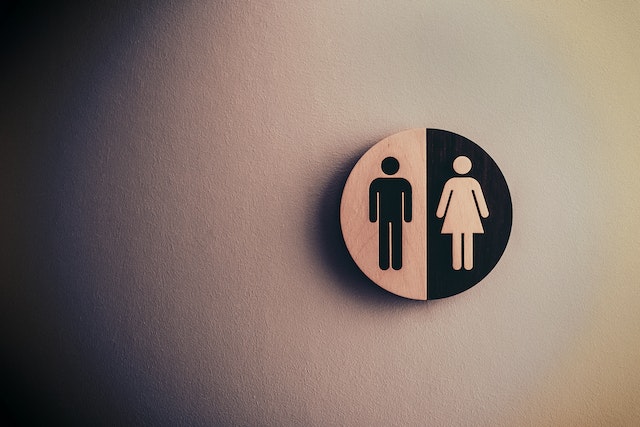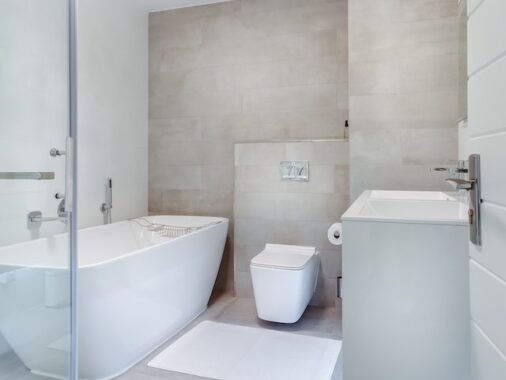Bathroom signs play a crucial role in creating a safe and welcoming environment for everyone, regardless of their gender identity, age, or ability. Effective bathroom signs communicate important information, such as the location of the restroom, the gender-neutral or accessible options available, and any rules that must be followed. In this article, we will explore the importance of choosing the right bathroom signs and factors to consider when making your selection. We will also provide tips for designing effective bathroom signs that enhance user experience and promote inclusivity. By the end of this guide, you will have a better understanding of the importance of bathroom signs and the key considerations to keep in mind when selecting and designing them.
Why bathroom signs matter
Bathroom signs play a critical role in communicating important information to users, such as the location of the restroom, the available options for gender-neutral or accessible restrooms, and any rules or regulations that must be followed while using the facilities. Clear and effective bathroom signs enhance the user experience and contribute to a welcoming and safe environment.
Clear and effective bathroom signs are especially important for individuals who have disabilities or are members of the LGBTQ+ community. They help to promote inclusivity, reduce anxiety, and ensure that everyone feels comfortable and welcome in the restroom.
Poorly designed bathroom signs, on the other hand, can cause confusion, frustration, and even safety hazards. For example, unclear signage can lead to individuals entering the wrong restroom, potentially resulting in discomfort, embarrassment, or harassment. Additionally, inadequate signage in emergency situations can lead to confusion and slow down evacuation efforts.
Overall, effective bathroom signs play a crucial role in creating a welcoming and safe environment for all individuals who use the restroom. Clear and well-designed signage can enhance the user experience and promote inclusivity, while poorly designed signs can cause confusion and safety hazards.
Factors to consider when choosing bathroom signs
When choosing bathroom signs, there are several factors to consider to ensure that the signage is effective, inclusive, and matches the decor of the bathroom.
- Purpose of the sign: The purpose of the sign determines the type of information that needs to be communicated. For example, a restroom sign may need to indicate the location of the facilities, the gender-neutral or accessible options available, or any rules or regulations that must be followed.
- Visual appeal and matching the decor of the bathroom: The signage should match the overall aesthetic of the bathroom, including color schemes and design elements. This can help create a cohesive and visually appealing environment for users.
- Inclusivity of all genders and abilities: Bathroom signs should be inclusive of all individuals, regardless of their gender identity or ability. This can be achieved through the use of gender-neutral language and symbols and by providing accessible options for individuals with disabilities.
- Readability: The font, size, and color of the signage should be chosen carefully to ensure maximum readability. Additionally, lighting should be considered when designing the signage to ensure that it is visible in all lighting conditions.
- Simplicity in design: The design of the signage should be simple and straightforward, with a clear and concise message. This can help avoid confusion and enhance user experience.
By considering these factors when choosing bathroom signs, you can ensure that the signage is effective, inclusive, and matches the decor of the bathroom, contributing to a welcoming and safe environment for all users.
Tips for designing effective bathroom signs
Designing effective bathroom signs requires careful consideration of various factors, including the purpose of the sign, visual appeal, inclusivity, readability, and simplicity. Here are some additional tips for designing effective bathroom signs:
- Use humor or creativity to grab attention: Adding humor or creativity to your signage can help grab attention and create a memorable experience for users.
- Incorporate visual cues to enhance the message: Visual cues, such as icons or symbols, can help enhance the message of your signage and make it easier for users to understand.
- Use gender-neutral language and symbols: Gender-neutral language and symbols can help promote inclusivity and create a welcoming environment for all individuals.
- Consult with diverse groups to ensure inclusivity: Consult with a diverse group of individuals, including those with disabilities and members of the LGBTQ+ community, to ensure that your signage is inclusive of all users.
- Keep the design simple and straightforward: Avoid complex or confusing designs and keep your messaging clear and concise. This can help ensure that your signage is easy to read and understand.
By incorporating these tips into your design process, you can create effective bathroom signs that enhance the user experience, promote inclusivity, and contribute to a welcoming and safe environment for all users.
Conclusion:
It’s important to remember that creating a welcoming and safe environment for all individuals who use the restroom is a crucial aspect of promoting inclusivity and equality. By implementing the tips and guidelines provided in this article, you can create effective bathroom signs that contribute to a positive user experience and a welcoming environment for all.






